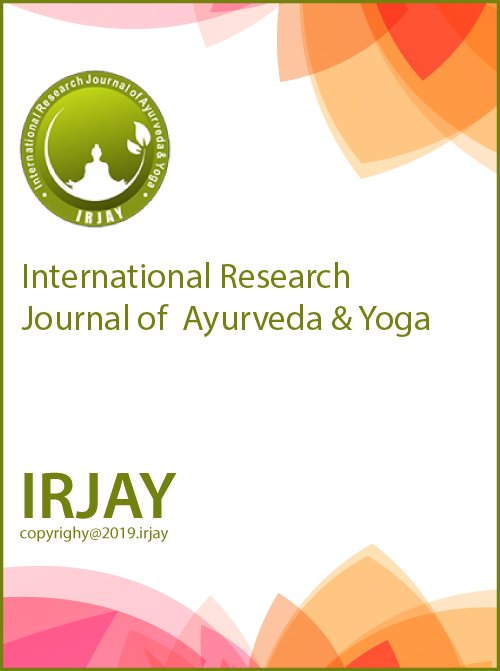Phyto- pharmacognostic Analysis Of Ayurvedic Medicine Bala (Sida Cordifolia Linn.)
DOI:
https://doi.org/10.48165/Keywords:
Bala, Pharmacognostic, Phytochemical, Balya, Kantikaraka and Sida cordifolia (Linn.)Abstract
Bala (Sida cordifolia Linn.), of Family Malvaceae is very important plant since long in traditional medicine of India. The drug is given various vernacular names i.e. Kharethi (Hindi), Baladana (Gujarati), Chikana (Malayalam) and Simaka (Panjabi) etc. the drug is attributed Balya, Kantikarka, Grahi, Vrishya, Ojhovardhaka, Stambhana, Brihmana, Sothahara, Rasayana and Hridya properties in different Ayurvedic classical texts. So, to evaluate the pharmacognostic and preliminary phytochemical standards of whole plant of Bala various methods including microscopy, physio-chemical contents and phytochemical estimation including quantitative analysis were done to determine the diagnostic features for the identification and standardization of intact and powdered drug. The organoleptic examination of the intact and powdered materials of whole plant of Bala revealed greenish yellow colour, odourless odour and slightly bitter taste. It showed presence of carbohydrate, alkaloids, amino acids, protein, saponin, and tannins in aqueous and methanol extracts. This study will be helpful to ensure the purity, safety and efficacy of the drug.
Downloads
References
- Dr. Prakash L. Hegde and Dr. Himani A., Dravyaguna Vijnana, Part – 2, New Delhi, Chaukhamba publication, reprint 2019
- Padmshri Prof.K.C.Chunekar, commented, Bhavaprakasa Nighuntu.of Shri Bhavamisra ,Publishers C.Bharati Academy, Varanasi, Reprint - 2015.
- https://plants.usda.gov/core/profile?symbol=SICO
- Prof. G. S. Levekar, Kailash Chandra, M. B. Yelne etc. Database on Medicinal Plants used in Ayurveda, Vol.- 8, Central Council for Research in Ayurveda and Siddha, 2007 5- Theodore Cook C.I.E. Flora of the Presidency of Bombay vol – 1, Ranunculaceac to Rubiaceae by Bishen Singh Mahendrapal Singh Dehradun, India
- Prof. G. S. Levekar, Kailash Chandra, M. B. Yelne etc. Database on Medicinal Plants used in Ayurveda, Vol.- 8, Central Council for Research in Ayurveda and Siddha, 2007 7- Laboratory guide for the analysis of Ayurveda and siddha formulations, CCRAS, Dept.OfAyush, ministry of health and family welfare, govt. of India New Delhi 8- Laboratory guide for the analysis of Ayurveda and siddha formulations, CCRAS, Dept.OfAyush, ministry of health and family welfare, govt. of India New Delhi 9- Laboratory guide for the analysis of Ayurveda and siddha formulations, CCRAS, Dept.OfAyush, ministry of health and family welfare, govt. of India New Delhi 10- Laboratory guide for the analysis of Ayurveda and siddha formulations, CCRAS, Dept.OfAyush, ministry of health and family welfare, govt. of India New Delhi

